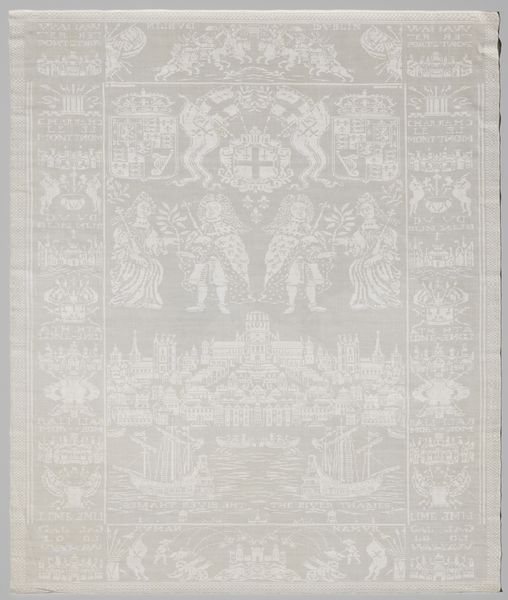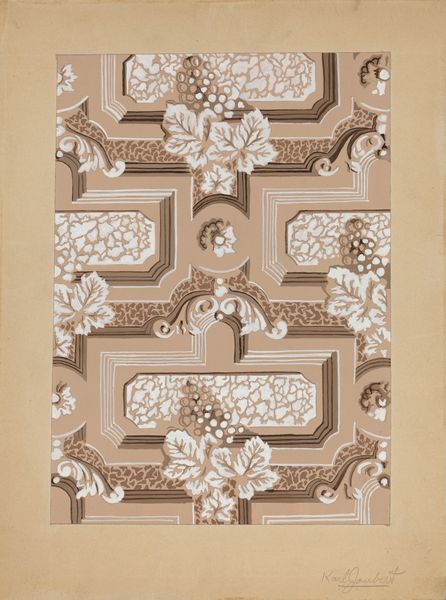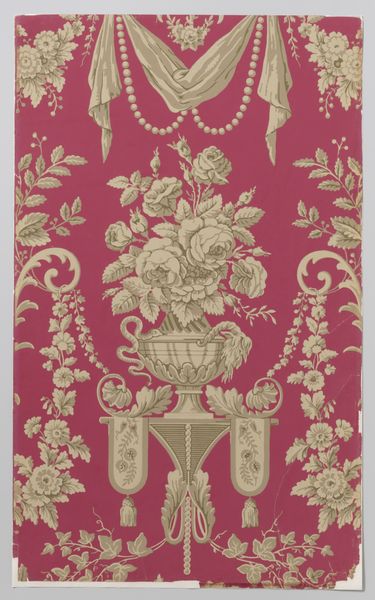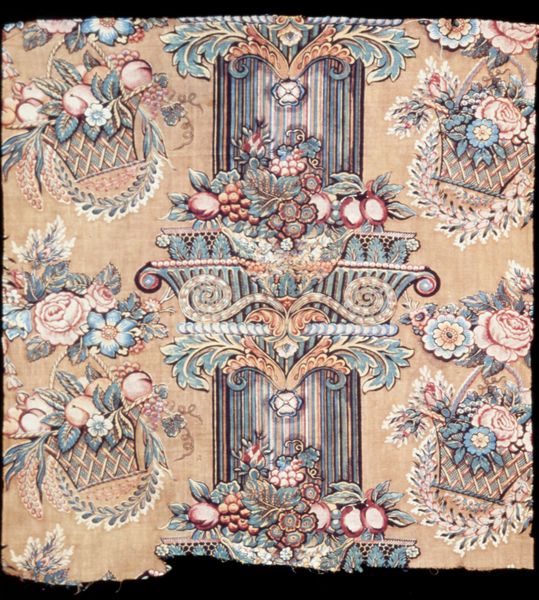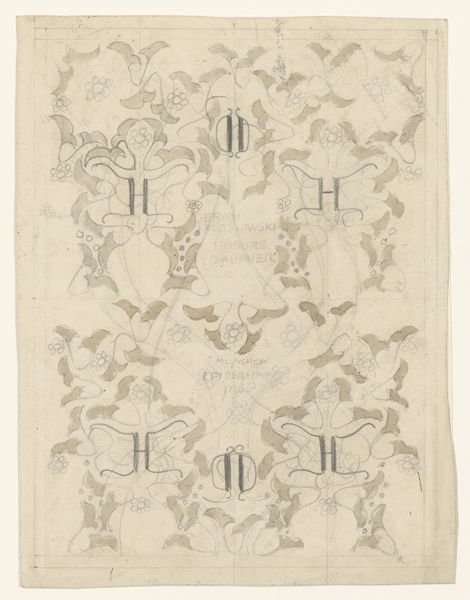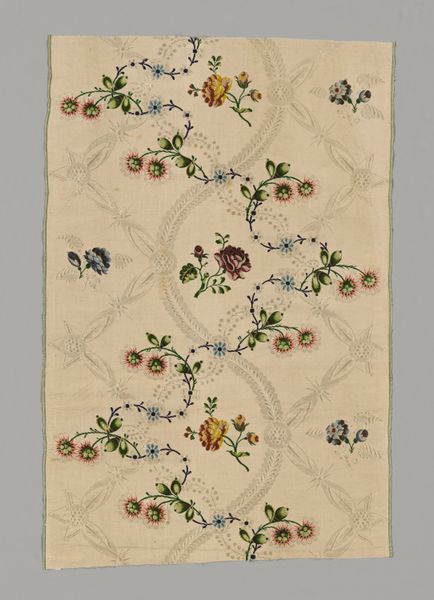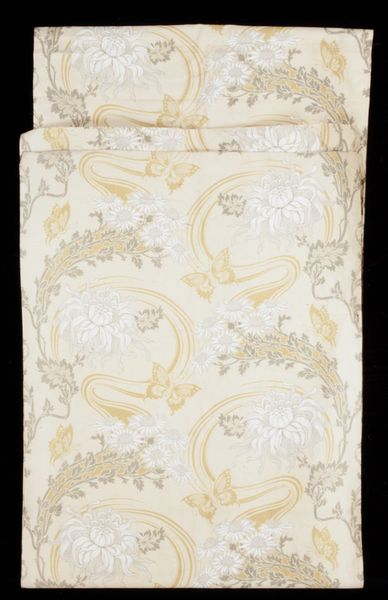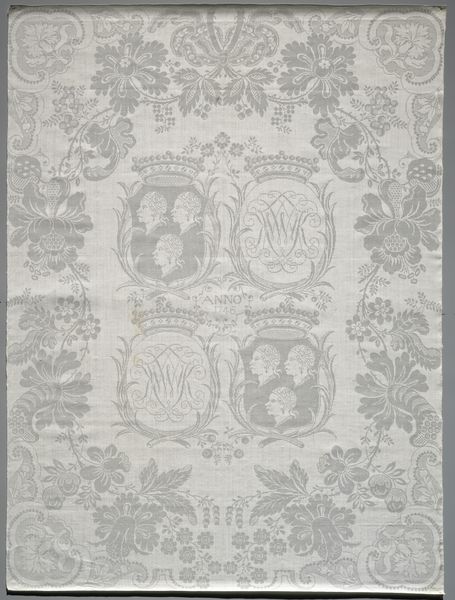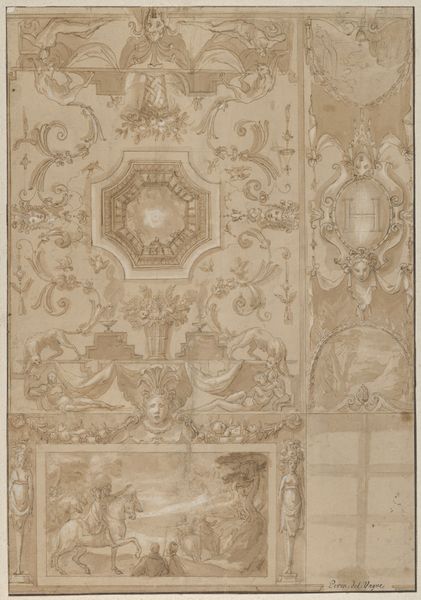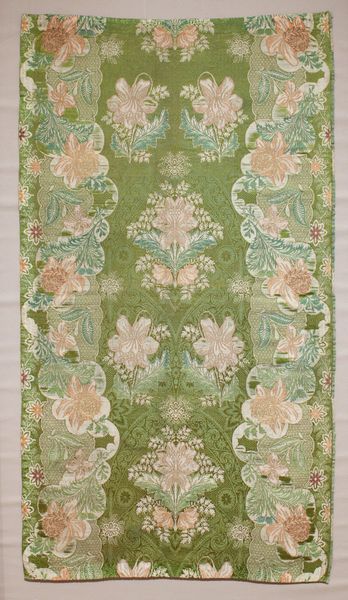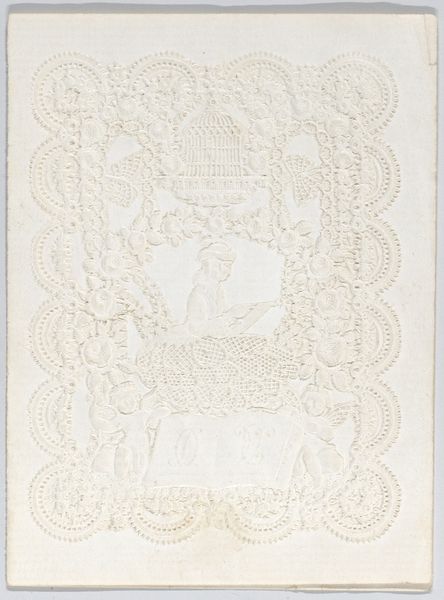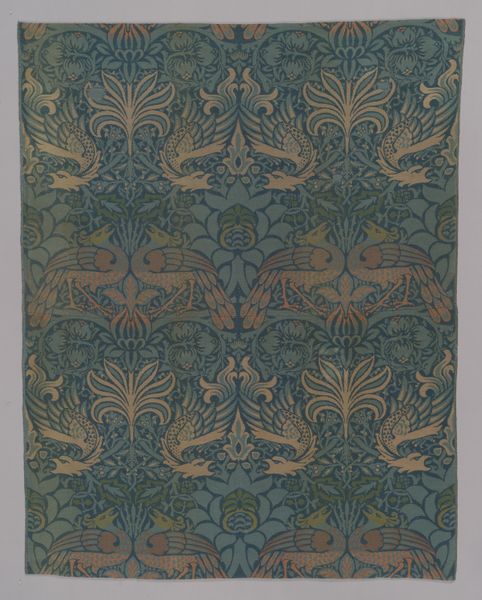
textile
#
pattern heavy
#
natural stone pattern
#
naturalistic pattern
#
narrative-art
#
arts-&-crafts-movement
#
textile
#
text
#
pattern background
#
pattern design
#
fabric design
#
pattern repetition
#
textile design
#
layered pattern
#
pattern work
Copyright: Public domain
Walter Crane designed "The House that Jack Built" as a wallpaper, likely in the late 19th century. The design, based on a children's nursery rhyme, encapsulates a Victorian fascination with moral storytelling and domestic aesthetics. This wallpaper, produced in Britain, speaks volumes about the social values of its time. Crane uses the visual language of medieval tapestries and illuminated manuscripts, referencing a romanticized past and a sense of established order. Note the inclusion of the parson, a clear symbol of religious and social authority, blessing the union of Jack and his bride in front of the house. The very idea of integrating art into the home environment was central to the Arts and Crafts movement, signaling an attempt to uplift everyday life through beauty and craftsmanship. To truly understand Crane's vision, one would need to examine the publications and exhibition records of the Arts and Crafts movement. Considering the social reforms it advocated, one might ask: whose lives were truly being improved by designs like these? The answer, as always, lies in a deeper understanding of social and institutional history.
Comments
No comments
Be the first to comment and join the conversation on the ultimate creative platform.
